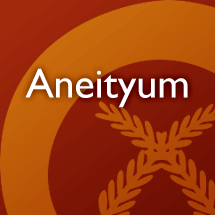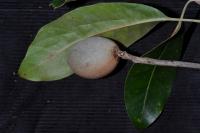An example search has returned 100 entries
aiyu
adj. sweet; shady
bookmarkatcatcaiyu
v. to emit sound from a bottle or coconut
bookmarkateucradi se an namilvai
v.n. get off the reef
bookmarkfetofeto
incatyatou
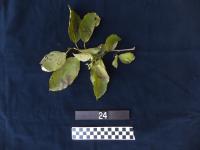
n. tree. Acting as a fence post. (collection: Ashley A McGuigan #24)
Example: 1. For vomiting/uneasyness - remove the bark of a stem and take the inner bark (this should be white). Smash the white bark with about 150ml of cold water and drink. The bark can also be boiled and cooled down to drink cold. Believes when you vomit a lot this will restore your body and give you energy again. Take after vomiting but can use even when not sick. 2. For stomache ache - Can also be prepare and taken as in part 1. 3. For painful urination, also prepared as in part 1. 4. The fruits are sticky and used as a type of local “glue.” Collect the fruits when ripe, hold the outside of the fruit in the hand, and put the end of the fruit that has the sticky sap on paper or anything else needing to be glued. In ancient times, this sticky glue helped join the strings together that were used to make a long fishing line. 5. In ancient times this sticky glue helped join the strings together when making a long one for fishing. 6. During the heat of the day, in the hot season, take inner bark from 1 stick, scrape bark into 1 liter water and drink all day to help prevent a person from getting urinary infection, resulting in painful urination from being in the sun too much. 7. If you put the leaves of this plant in a bag with your fishing gear – it will help catch a lot of fish – magic. 8. Cut a 1-2 m long branch in each of 4 corners of the garden which is a rectangle, place it in an “X” at each corner, this will cleanse people who have not been cleansed who come in the garden. 9. If a person is not cleansed e.g. has not fasted from certain foods, the crops will not bear good fruits. So when gardening, people believe it is best not to eat coconut, shellfish, fish, stay away from sex, and no fermented food like breadfruit and bananas, OR if you have a visitor overnight and then you heal to cleanse yourself before going to the garden. After a woman finishes her period, she will stay out of garden for 10 days, this is specifically for kava, water taro, sugarcane and yam in the garden. Other crops – cassava, sweet potato, and taro Fiji are okay. Different Kastom for N, S, W, E people – so this Kastom is for South and Eastern people.
bookmarkincispev
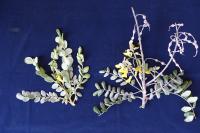
n. tree, 3 m tall (collection: Gregory M. Plunkett #3547)
Example: This plant is for medicine to treat a spiritual condition related to the coral snake that is the seawater spirit. When a woman is pregnant, some times she gets sick, so use this leaf with 2-3 other unspecified leaves and mash them together, squeeze the juice into a small cup (bamboo), wave around the woman’s body, and then put a few drops onto her head and body, then she drinks the rest. This will help heal her sickness. This treatment can be used for men who have a toothache from eating too much fish--the seawater spirit of the coral snake makes the tooth hurt. It is used in the same way as for a pregnant woman. If the pain from the toothache is really from the seawater spirit, then this will cure it; if not, it will not help.
bookmarkinciñyiñpa
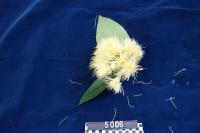
inga
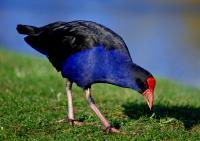
inhupau
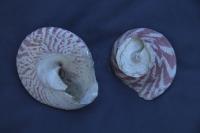
ink
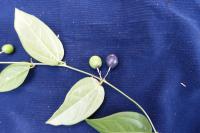
inlop̃otjap
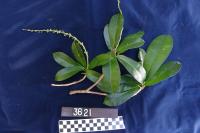
inmeranauunse
n. kind of breadfruit
bookmarkinmereijcil
n. kind of breadfruit
bookmarkinp̃alanhas
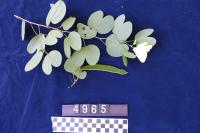
inranwai
n. a brook that is dry in summer
bookmarkintapin
n. a hedge; a shelter
bookmarkintate a nelgo waj
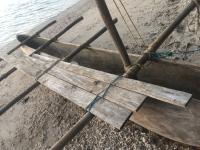
intel e cha

n. terrestrial orchid, growing in open (collection: Gregory M. Plunkett #3523)
Example: This is a "message plant." If a person puts the flower behind their ear and then stares out at you, or tosses the flower to you, then say yes and follow them, for example, to drink kava, or to go swimming. Or a man invites a woman to go somewhere with him. Alternatively, you can leave the flower on a table and this is also a message to go with a person. Leaves also used to wrap foods. Decorate yard around the house.
bookmarkintesyaniau
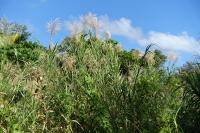
n. grass to 3 m, flowers brown. Growing in degraded secondary forest along trail. (collection: Michael J. Balick #4969)
Example: The stem of this plant is used to make walls of houses. Collect the stem and remove the leaves, and then take one of the bush vines (any of them) and tie the stems into bundles for making house walls or fences for chicken pens. Children make a whistle from a hollow piece of stem from this plant.
bookmarkiñytuplec
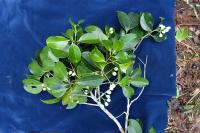
kitlel
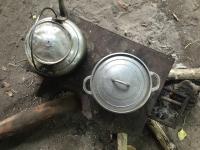
m̃orom̃ora
[ŋmoroŋmora] n. ants
bookmarknaledpen
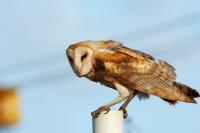
namumuatamag
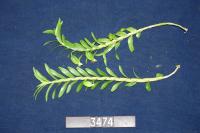
n. epiphyte on fallen tree, growing in disturbed forest. Fruit. (collection: Gregory M. Plunkett #3474)
Example: When children feel weak, this is a good medicine for them. Squeeze the leaves and give the child (3-5 years of age) one tea spoon of the juice and it is said to make them strong again.
bookmarknanad
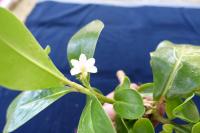
napaeicei
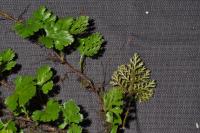
napuig
n. a reed frame for supporting the tendrils of yams
bookmarknategpece
n. kind of plant, grass, or fern
bookmarknathut an nadiat
n. near morning
bookmarknauad
n. kind of tree
bookmarknauyerop
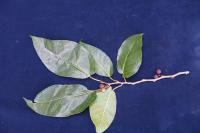
n. tree, 3 m tall (collection: Gregory M. Plunkett #3505)
Example: The young leaves are edible, after boiling for 5 minutes. A piece of coconut and a pinch of salt is wrapped in the leaves and eaten. The mature leaves are used to wrap food such as pig or cow meat and cooked in an earth oven. Tie this bundle with a piece of Pandanus fiber to secure it before putting in the earth oven. Both the green and ripe fruits are edible.
bookmarkneaig auyag
n. kind of palm
bookmarknecsap̃
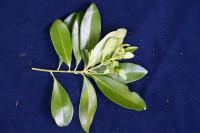
n. shrub, 2 m tall (collection: Gregory M. Plunkett #3534)
Example: This tree has very hard wood. 1. Use the small stems to plant dry land or swamp taro, sharpening the end and pushing it into the ground to make a hole. 2. It also is useful for fence, posts for houses. 3. Small stems are also used to make a comb for the hair. 4. Plant pole for taro kava. 5. A branch is shaped and used to husk coconut. 6. The wood is hard and in ancient times people would take a forked piece and put string on one side of it, sharpen the other side and use with the string as a fish hook – need to keep rope tight until it is in the canoe. Do not give it slack – strong use AAM 17.
bookmarknecñap̃it cei
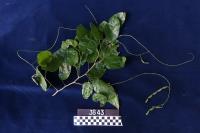
neijin nij
n. cliff
bookmarkneijiv
n. fir; pine
bookmarknetcetas
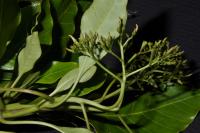
n. well branched tree, 15 m tall (collection: Gregory M. Plunkett #4084)
Example: 1. The name means "explosion". Further information about the plant withheld.
bookmarknihpad
n. kind of tree
bookmarknijilah
n. kind of tree
bookmarknijmanyahao
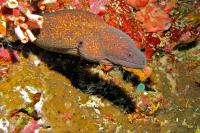
n. Yellow-Edged Moray
Example: Photo by Bernard Dupont, License: CC BY-SA 3.0 via Fishes of Australia
bookmarknijwou
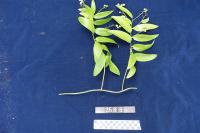
n. vine climbing up a macaranga tree, growing in open disturbed area. Fruits green. (collection: Gregory M. Plunkett #3588)
Example: 1. To build a cyclone house, take the vine of this species to tie pieces of the house. To prepare the vine for use as rope, collect many feet of it, put it in a fire, roll it in a figure 8, wait until it softens and then use for tying. This vine is hard and needs to be heated to a high temperature in the fire to make it soft; the person preparing this must use gloves to tie it to the posts and rafters while it is still warm. When it cools, it is very strong. Rope made from this vine will last a long time--perhaps 10-15 years. It can also be used to make a regular house. However, it is not as strong as GMP #3589. 2. For men who want rasta in hair, take a few leaves and dry them, burn with some other plants to rub on the rasta and keeps it healthy, keep from splitting.
bookmarknilamese
n. a species of orchid (there are three on the island)
bookmarknimtinjap par alau
n. wind-related term; no definition provided
bookmarknirinat erefera ran
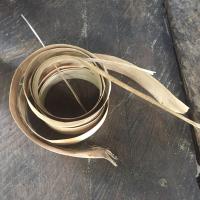
nohos esjig inwai
n. a banana
bookmarknohwan nuputu
n. kind of taro
bookmarknomoj
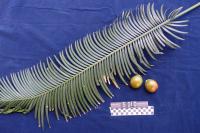
n. cycad to 3 m tall, 25 cm dbh (collection: Michael J. Balick #5010)
Example: In the past there were no toys for the children, so people made toys from the seed of this plant. They peeled the fruit, took the seed, removed the inside, punched one hole on each side, put a string through each of the holes and twisted the string to spin the seed such that it would make a whistling sound as the fruit spun faster and faster. On Palm Sunday, people use this leaf in Church. People plant this cycad around their homes and use it as an ornamental. Some people believe that having this plant around their homes will keep the bad spirits away.
bookmarknoporo pora
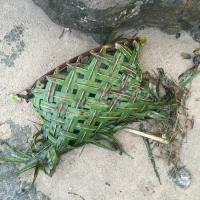
nopou
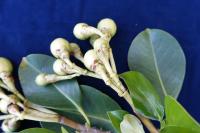
n. tree to 5 m, dbh 10 cm (collection: Michael J. Balick #4881)
Example: The wood of this tree is used to make house-posts, it is strong. The leaves are used as a compost for the taro patch; line the hole with the leaves of this tree, then place soil over that and plant the taro. When the fruits are ripe, local people say that the hermit crabs are "fat" and ready to collect and eat. When a person is in the forest and there is no coconut fruit fiber to start a fire with, use a dry stick, shave it and use a match to start a pile of this tinder to make a good fire. The wood is said to be "oily." This gives it a nice aroma. To perfume coconut oil, drop the dry flowers in it--use 1 handful of dried flowers added to a pot of oil boiling on the fire while making it. Strain out flowers and the oil smells good. Flowers can also be added to the oil once it is bottled to perfume it.
bookmarknopwag
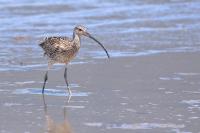
nucsei
n. kind of taro
bookmarknumujced
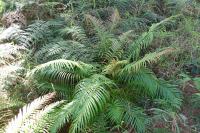
n. fern to 0. 75 m, sori brown. Growing in pine forest. (collection: Michael J. Balick #4983)
Example: Join two of the inrolled fronds together at the part where the frond is opening (the tip that is curled) such that the leaves are held together by their unfolding growing tips. Place this along the path that is frequented by a wild pig (they travel along paths) and when the pig passes these two leaves, and is chased by a hunter’s dogs, these leaves in this formation are said to sap some of the pig’s energy and thus allow the dogs to catch up with it. This was explained to Tony by another person who mentioned it as a sort of magical power possessed by this type of fern.
bookmarknusjai um legad
n. kind of sugarcane
bookmarkrohalrohal
adj. rough, applied to sugarcane-leaf thatch
bookmarktesyapotan
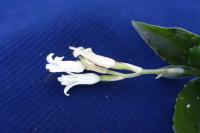
n. terrestrial orchid growing in cloud forest along ridge. Flowers white. (collection: Gregory M. Plunkett #3281)
bookmarktilaconai
n. first quarter of the moon
bookmarkuagas
äminäkäi
n. Marattia smithii
Example: Frond: bathe in infusion, neurodermatitis and infantile eczema
bookmark